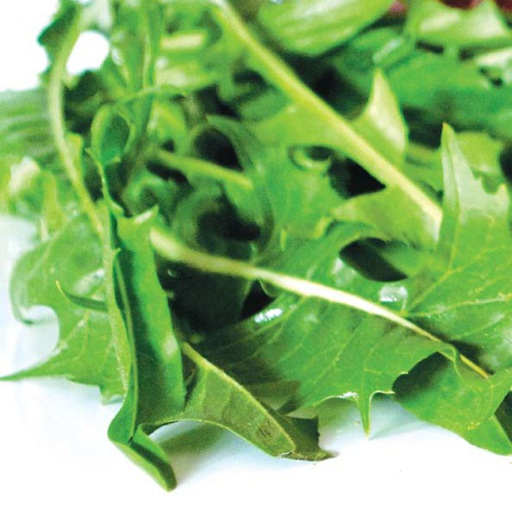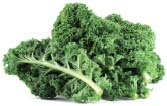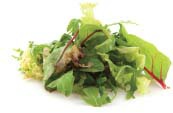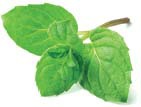The Healthy Green Drink Diet (5 page)
Read The Healthy Green Drink Diet Online
Authors: Jason Manheim

Celery belongs to the same family as fennel and parsley and gives your smoothies a slightly salty taste. It
pairs beautifully with sweet fruits like apples. Careful how many stalks you fill your blender with when
making smoothies as all but the most powerful blenders have trouble breaking down its stringiness; great
for juicing, though. It’s rich in vitamins K and C and is a great immune system booster. Celery also has the
potential for reducing high blood pressure because of compounds called phthalides, which allow blood
vessels to dilate.
Chard
2 cups (72 g), raw
1.3 g protein
1.2 g fiber
37 mg calcium
1.3 mg iron
273 mg potassium
153 mg sodium
4404 IU vita A
.065 mg riboflavin
.071 mg vita B6
21.6 mg vita C
1.36 mg vita E
.6 mg vita K
Brimming with vitamins A, C, and K, this leafy green has been known to also regulate blood sugar levels
and provide anti-inflammatory benefits due to its high phytonutrient content. It is next to spinach for



denseness of nutrients, so don’t skimp. It’s a beautiful green leaf with many different varieties to try:
rainbow, Swiss, red, golden, and white. Along with mustard greens, kale, and collards, chard is one of
the four leafy green vegetables commonly referred to as “greens.”
Cilantro (Coriander)
1 cup leaves (16 g), raw
.34 g protein
.4 g fiber
11 mg calcium
.28 mg iron
83 mg potassium
7 mg sodium
1080 IU vita A
.026 mg riboflavin
.024 mg vita B6
4.3 mg vita C
.40 mg vita E
.05 mg vita K
This fragrant herb has somewhat of an acquired taste but has been used to treat a multitude of problems
like reliving intestinal gas and aiding digestion, calming inflammation due to arthritis, and lowering blood
sugar and LDL cholesterol. It’s also been used effectively to fight Salmonella. I use it sparingly and
mostly to add a little kick in flavor. It pairs well with citrus, spiciness, and fruits like mango.
Collards
2 cups chopped (72 g), raw
1.76 g protein
2.6 g fiber
104 mg calcium
.14 mg iron
122 mg potassium
14 mg sodium
4801 IU vita A
.094 mg riboflavin
.119 mg vita B6
25.4 mg vita C
1.63 mg vita E
.37 mg vita K
You thought we were done with the cruciferous family, didn’t you? Collards are one of the best
cholesterol-lowering foods known to man and is practically overflowing with vitamins A, C, and K,
manganese, folate, calcium, and dietary fiber. It’s got a bit of spiciness to it but otherwise pretty mild in
terms of flavor. It goes well with basil and strawberries. Next time you’re mixing up a big pot of
overcooked collards and bacon grease, save a few fresh leaves and try it in Strawberry Patch.
Dandelion Greens
2 cups chopped (110 g), raw
2.97 g protein
3.9 g fiber
206 mg calcium
3.41 mg iron
437 mg potassium
84 mg sodium
11177 IU vita A
.29 mg riboflavin
.28 mg vita B6
38.5 mg vita C
3.78 mg vita E
.86 mg vita K


They may take over your garden and cause you to go on a picking rampage but don’t throw them out,
they’re rich in vitamins A and K and are known to have purifying effects on the blood and liver.
Unfortunately, you can’t pack these greens in the blender like you would with something like spinach…
unless you have a taste for the extremely bitter. It’s better combined with other greens and a few sweet
fruits, or if you can find them or pick them young, they’re much less bitter. Note: if you’re picking these
from your yard, make sure they’re pesticide free.
Kale
2 cups chopped (134 g), raw
4.42 g protein
2.7 g fiber
181 mg calcium
2.28 mg iron
599 mg potassium
58 mg sodium
20604 IU vita A
.174 mg riboflavin
.363 mg vita B6
160.8 mg vita C
~ vita E
1.1 mg vita K
This cold,hardy, green leafy powerhouse of nutrients is, you guessed it, another member of the cruciferous



family. If broccoli is the king, kale is the king’s hand. Full of vitamins A, C, and K, kale is also a
powerful weapon against bladder, breast, colon, ovary, and prostate cancer. It can be a tough one for
some blenders due to its waxy texture, so be sure to blend until the chunks go away. It’s a mild-flavored
green, slightly bitter, and can be found in many varieties; try black lacinato (dino), curly (Scotch), Napus,
blue leaf, red leaf, and white leaf.
Lettuce (Mixed Greens)
2 cups shredded (72 g), raw (green leaf)
.98 g protein
.9 g fiber
26 mg calcium
.62 mg iron
140 mg potassium
20 mg sodium
5332 IU vita A
.058 mg riboflavin
.065 mg vita B6
6.6 mg vita C
.16 mg vita E
.1 mg vita K
The nutrient table above is specifically for green leaf lettuce; however, throughout this book, I simply
refer to lettuce as any combination of mixed green you usually find prepackaged in bags at your local
market. Sometimes called mesclun (baby greens), it can consist of green leaf lettuce, red leaf lettuce,
endive, frisée, radicchio, oak leaf, iceberg, mache, mizuna, and romaine. Generally speaking, the darker
and more colorful the lettuce, the more nutritious. Fill your drinks with as much variety as possible.
Mint
1 cup chopped (26 g), raw
.96 g protein
2 g fiber
62 mg calcium
1.3 mg iron
